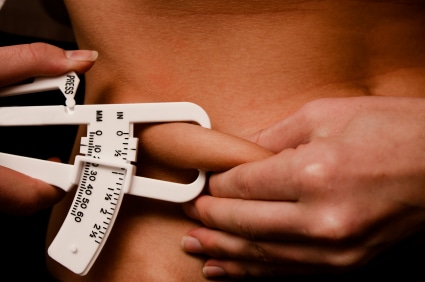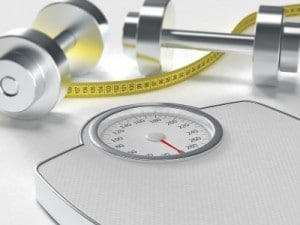 Are You Sure There are 3,500 Calories in a Pound?
Are You Sure There are 3,500 Calories in a Pound?
How many calories in a pound? Seems like an easy question to answer, but is it?
We have all heard it. You even have read it on this blog. It’s as commonly accepted as 24 hours in a day and 365 days in a year. No one questions it. Everybody knows there are 3,500 calories in a pound, right?
But, we are probably all wrong. The science that establishes 3,500 calories in a pound is not that clear or precise, certainty is not as clear as we seem to suggest.
So how many calories are in a pound? It seems no one knows for sure. Yet, most weight loss recommendations are based on 3,500 calories in a pound. Jeez, that’s comforting. This makes tracking your calorie intake and expenditure even tougher if you don’t know the real value of what you are tracking.
Now when we say there are 3,500 calories in a pound we are talking about a pound of fat. Could there be a different number of calories in a pound of muscle? Have you ever given that prospect a thought?
Well, the number of calories in a pound of muscle is less than the calories in a pound of fat. So a pound is not a pound when it comes to calories and as we discussed previously a calorie is not always a calorie meaning not all calories are processed the same by the body. So all of this makes losing fat and gaining lean body mass even more complicated.
Let’s see if we can make some sense of it all.
How We Got to 3,500 Calories in a Pound
So how did we get to there being 3,500 calories in a pound of fat?
There are 454 grams in a pound. That’s a fact! Well, not even that is an exact fact. To be more precise there are 453.5937 grams in a pound, but for this discussion, we will use 454 grams to a pound.
A gram of fat contains 9 calories. That’s a fact, too. But, that fact is not precise either. Science shows that there can be anywhere between 8.7 to 9.5 calories per gram of fat. So 9 calories is pretty much in the middle and it’s an easy and whole number to use so we use 9 calories per gram of fat.
Now let’s multiply 9 calories per gram times 454 grams in a pound and we get 4,086 calories per pound. Sounds a lot like 3,500 calories to me – not! How about you? Are you confused?
 Well, it turns out that fat isn’t all fat. Fat is mostly fat, but not all fat. It contains other stuff. It’s kind of like being “mostly dead” in The Princess Bride or mostly pregnant. Fat it turns out is anywhere from 72% to 87% fat. Eighty-seven percent fat is the number that is frequently used. And, if you multiply 4,056 calories by 87% “pure fat” you get 3,529 calories which is close enough to 3,500 calories to state that a pound of fat has 3,500 calories.
Well, it turns out that fat isn’t all fat. Fat is mostly fat, but not all fat. It contains other stuff. It’s kind of like being “mostly dead” in The Princess Bride or mostly pregnant. Fat it turns out is anywhere from 72% to 87% fat. Eighty-seven percent fat is the number that is frequently used. And, if you multiply 4,056 calories by 87% “pure fat” you get 3,529 calories which is close enough to 3,500 calories to state that a pound of fat has 3,500 calories.
But, those “missing” 29 calories are enough to screw up calculations when it comes to calories in and calories out aren’t they? If you don’t account for those 29 calories in your daily calories in – calories out calculations you are off 3 pounds at the end of the year.
Now to complicate it further, if you take the extremes on either side to derive a range of calories per fat pound using 72% pure fat coupled with 8.7 calories per gram of fat to establish the low-end and 87% pure fat coupled with 9.5 calories per gram to establish the high-end you get a range of 2,844 calories per pound of fat to 3,752 calories per pound of fat.
To lose weight you have to create a calorie deficit. It’s just that it is hard to calculate the deficit because it’s hard to come up with accurate calorie targets or endpoints.
Don’t believe me? If there are only 2,844 calories in a pound rather than 3,500 calories per pound then your weight loss/gain calculations can be off 84 pounds over a year. Here’s the calculation: (3,500 -2,844 = 656 calories x 365 days divided by 2,844 calories in a pound). And, using 3,752 calories you are 24.5 pounds off your calculations during a year.
By the way, I did these calculations using conventional math which took just a couple of seconds. Had I used common core math I would still be calculating and probably get the wrong answers as the odds of being wrong go up the more steps it takes to calculate or figure something out. Math should follow the KISS principle, “Keep it simple, stupid”.
That’s just fat. What about muscle? How many calories in a pound of muscle?
How Many Calories Are in a Pound of Muscle?
Let’s switch from fat to muscle. How many calories are in a pound of muscle?
Talking about calories in a pound of muscle is just as confusing as talking about calories in a pound of fat. Let’s start with how many grams in a pound of muscle. Like fat, the number is 454 grams per pound of muscle. Whew! That was easy. But, that’s the last of easy.
Protein makes up muscle. There are 4 calories per gram of protein. But, that represents an average for the population and the average is 4.1 calories per gram. Not a big deal.
But, here is what is a big deal. While a pound of fat is mostly fat, a pound of muscle is mostly…..not protein. What?
A pound of muscle is mostly WATER and water has no calories. Only 22% of a pound of muscle is in fact protein. So let’s take 454 grams and multiply by 4 calories per gram and multiply that 22% and we get 399.5 calories per pound of muscle. Let’s call it an even 400 calories since nothing else we have done thus far is precise.
In reality, the number of calories stored in a pound of muscle is around 600. Why? Because muscle also contains some fat and not just protein and water. Fat contains 9 calories per gram so when you add in the fat component to muscle there are 600 calories in a pound of muscle.
So if you are starving and have to live off your muscle you are not going to be able to burn many calories – just 600 calories per pound. To make it more confusing, although there are 600 calories in a pound of muscle it takes more than 600 calories to build a pound of muscle. How many calories it takes to build a pound of muscle is hard to know as there are many moving parts involved in building muscle.
Building Muscle
Building muscle is dependent on many factors including genetics. For some building muscle is relatively easy while for others it seems nearly impossible. Building muscle is dependent on getting enough quality protein in the diet. How efficiently a protein is used and converted to build muscle depends on its quality and its bioavailability.
Building muscle also depends on the right exercise, and it is influenced by one’s hormonal status. You can eat a bunch of protein but if you don’t exercise most of it will be stored as fat calories. The same is true if you don’t have enough anabolic hormones on board.
Building muscle requires a stimulant – exercise. Accumulating fat does not. You don’t “build” fat. Building muscle takes calories, exercise, and hormones. Accumulating fat requires simply overeating.
Building muscle takes work and work requires calories. That’s why it takes more calories to build a pound of muscle than the amount of calories stored in muscle. Lean protein has the highest thermal effect on food. The thermal effect of food is the caloric cost to digest and absorb food. Believe it or not, digesting food requires energy, too.
Lean protein has a thermal effect of 30%. This means for 100 calories of lean protein consumed it takes 30 calories just to break it down and absorb it. The thermal effect of food many times is overlooked when tracking calories. The thermal effect of carbohydrates ranges from 5% to 15% and for fat 0% to 5%.
Thus, building muscle is calorie-expensive – which is what you want if you want to improve your body composition. Most fitness trainers recommend consuming 300 to 500 additional calories a day if you are trying to add muscle (while maintaining your current level of fat), or an extra 2% calories per lean body mass five days a week.
Here’s the kicker. The right circumstances have to be in effect to take extra calories to build muscle. Any extra calories will build fat, but muscle requires the right environment.
And, what is that environment? Strength training coupled with the proper hormonal milieu and nutritional status in terms of having enough nitrogen (protein) available to build muscle. Both strength training and high-intensity interval training create the proper hormonal milieu by stimulating the release of testosterone and growth hormones.
 “Building” fat doesn’t require any special attention. Just extra calories. Any extra calories the body doesn’t need at the moment will be stored either as fat or as glycogen. So accumulating a pound of fat it doesn’t take any real effort.
“Building” fat doesn’t require any special attention. Just extra calories. Any extra calories the body doesn’t need at the moment will be stored either as fat or as glycogen. So accumulating a pound of fat it doesn’t take any real effort.
Building muscle takes effort in the form of muscle-building exercises and discipline in terms of eating properly to provide enough protein and calories to build muscle while preventing fat accumulation.
The diet has to be clean and as precise as possible. You have to thread the needle so to speak. All of that is a challenge and that is why most of us find it easier to get fatter than leaner.
Should I Track My Calories?
The big question now is “Am I wasting my time tracking the calories I consume and calories I burn?
I would not tell anyone not to track calories, but based on all of this you have to wonder if it is worth it. Certainly for competitive athletes and bodybuilders counting calories can mean the difference between success and failure and for them counting calories is worth the time and effort.
Is it worth it for the average person? It’s hard to know when we don’t know with confidence how many calories are in a pound. One good thing about tracking calories is over time you develop an appreciation for the number of calories in a meal and at some point, you can look at a plate of food and have a good estimation of how many calories and the quality of the calories you are consuming.
If you decide to track calories just recognize the calculations are estimates. Also recognize that if you are counting calories and not seeing the results you expect, it may not be you. It may be the calculations. The calculations are not as clean as they might seem. So don’t be surprised if what you see in reality in terms of your results is different from what you calculated. Simply adjust accordingly.
By the way. Do you trust the nutrition fact labels on the food you buy? Guess what? The FDA allows a 20% variance on food labels. So if a food is listed as having 400 calories it may range from 320 to 480 calories. Undesirable nutrition facts like calories, fat, cholesterol, and sugar content are frequently understated on food labels. And, desirable nutrients like fiber and protein are frequently overstated on food labels. This adds to the difficulty of counting calories accurately.
By the way by the way. There are fewer than 24 hours in a day which is why a year is more than 365 days long. They too are just close approximates. Sorry to have to break you the bad news. Aren’t you glad science is so precise and medical evidence is so pure and so evident?
References:
https://nutritionfacts.org/blog/debunking-the-3500-calorie-per-pound-rule/
Article updated 12/26/23. Originally published 9/21/15.
